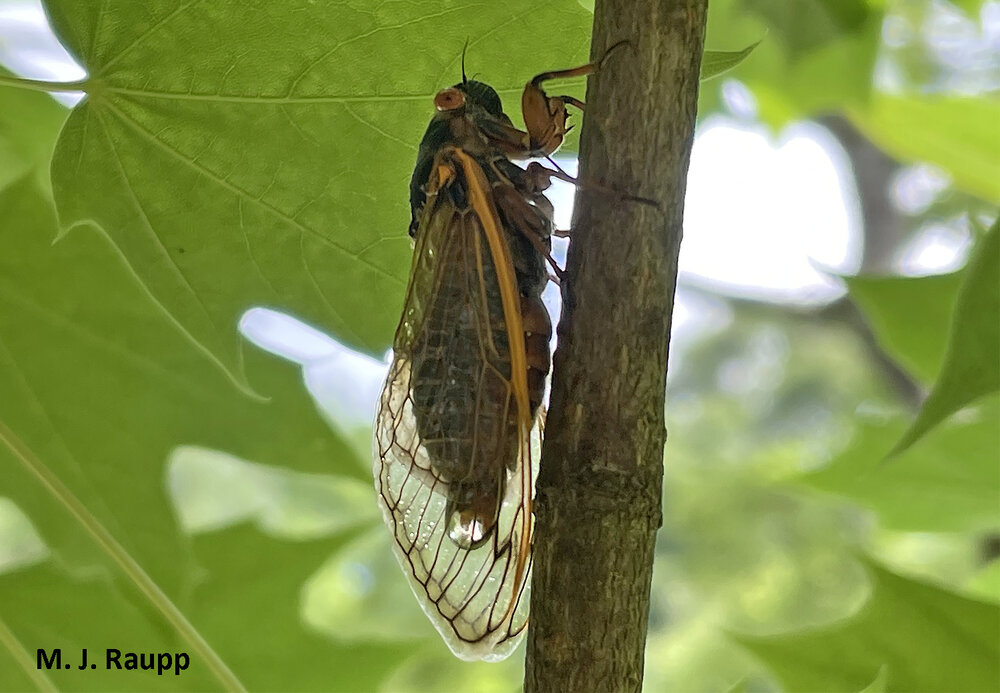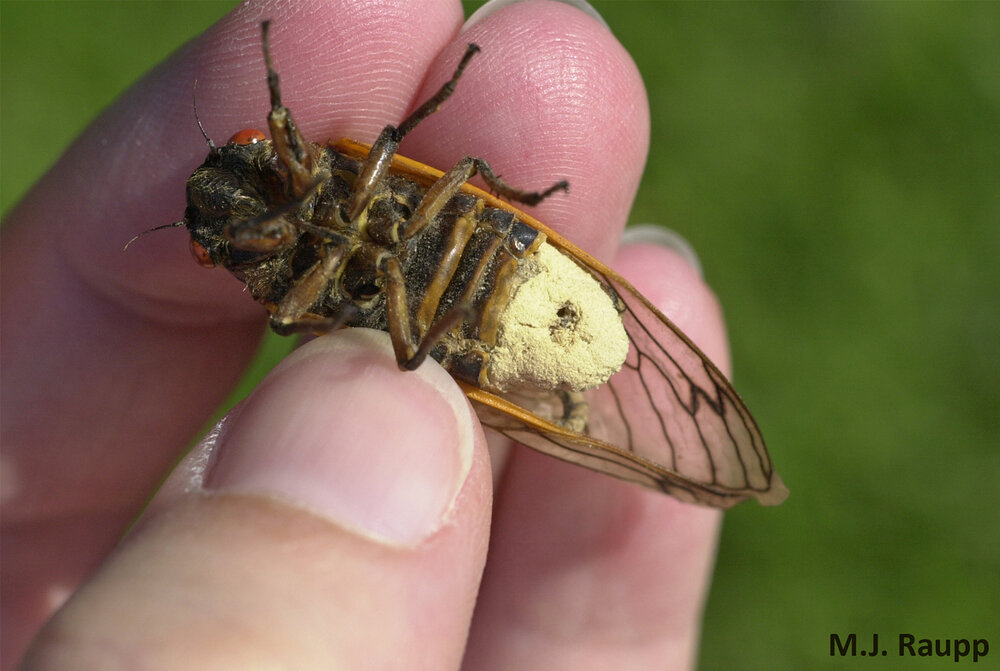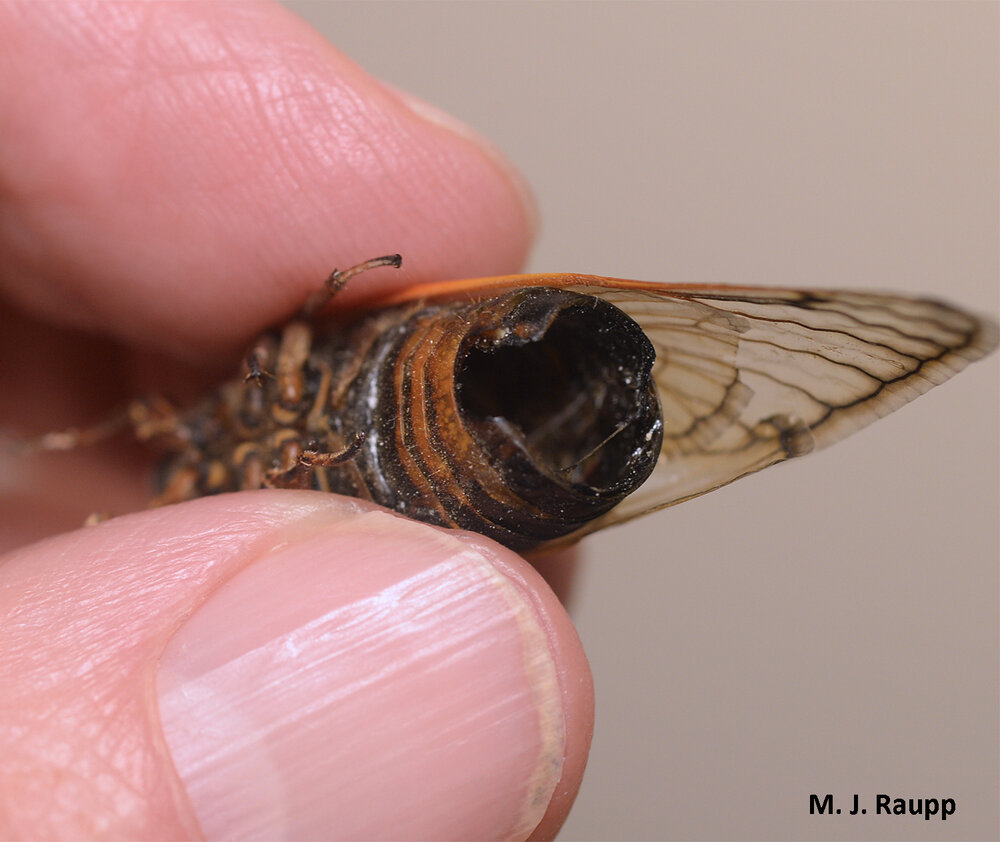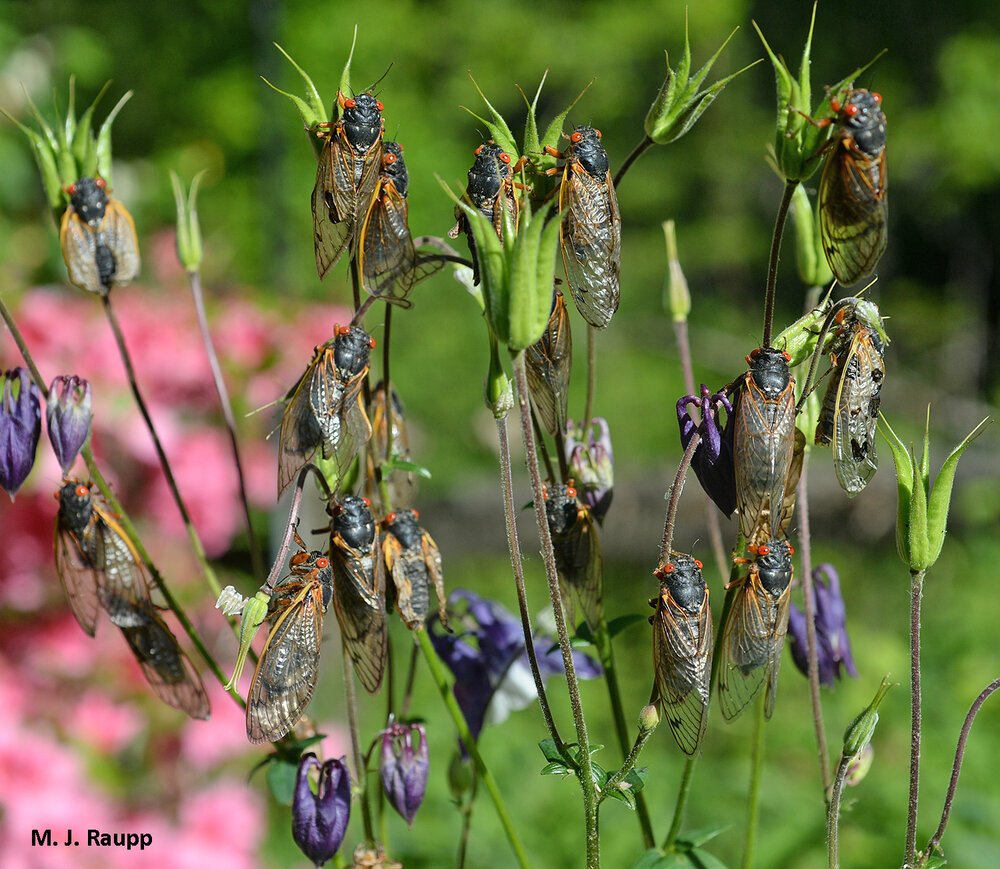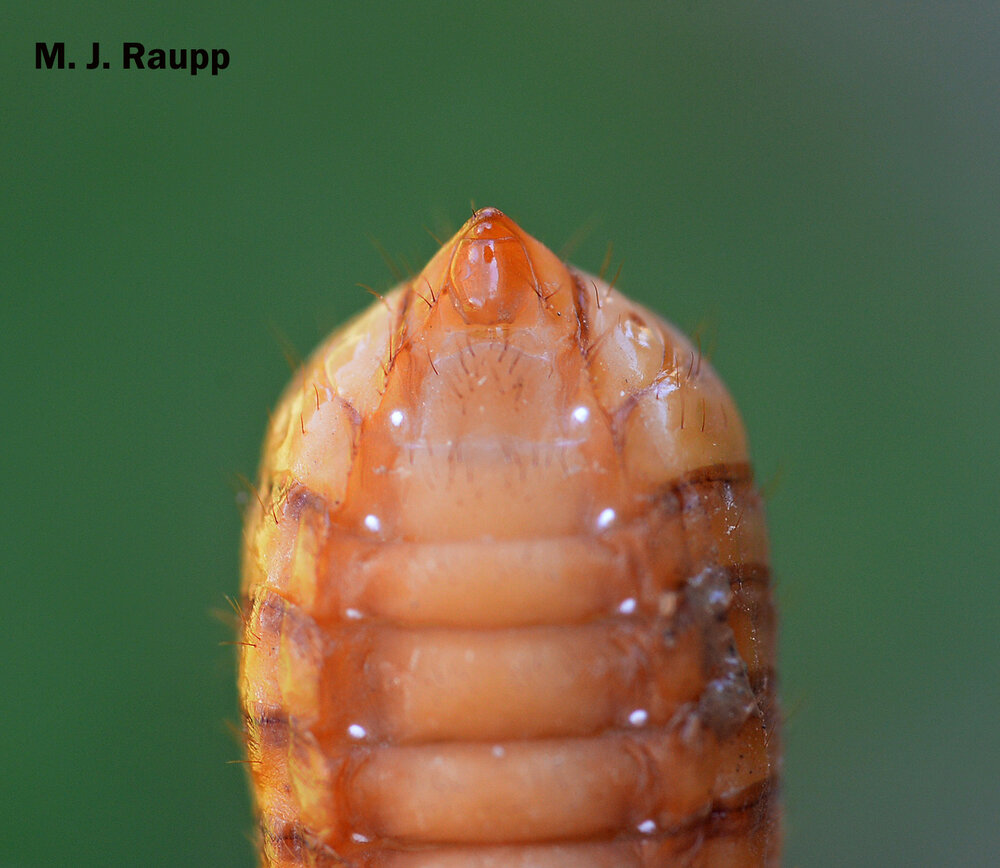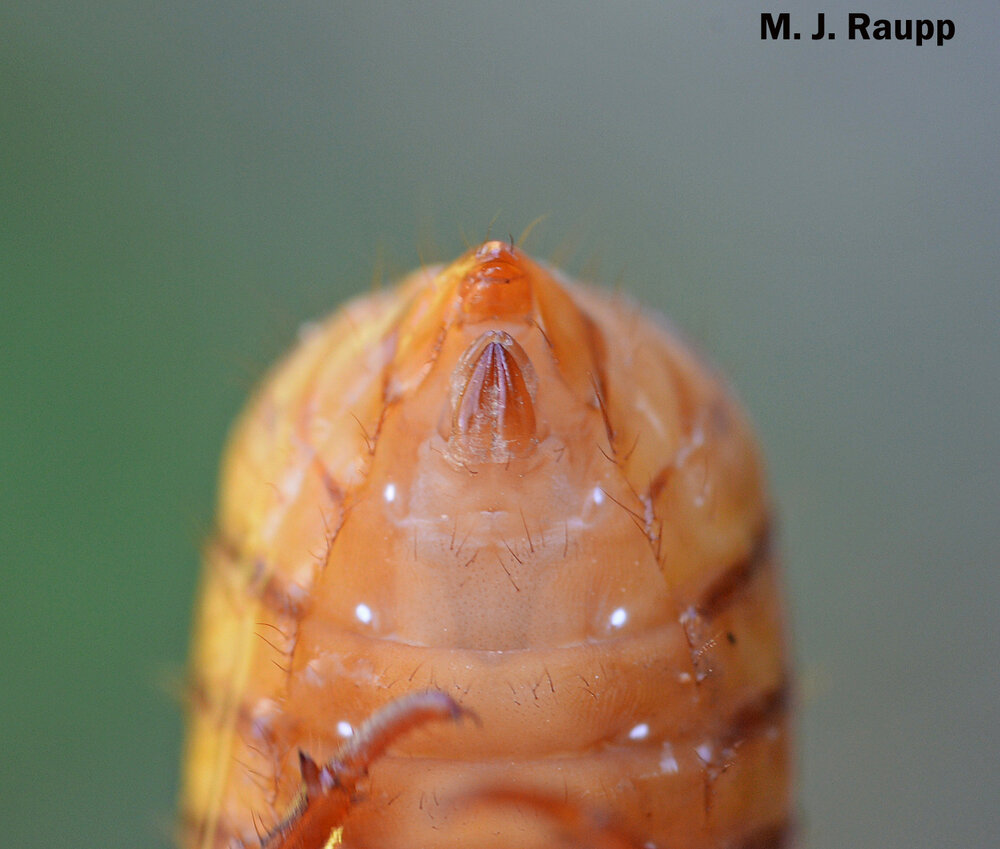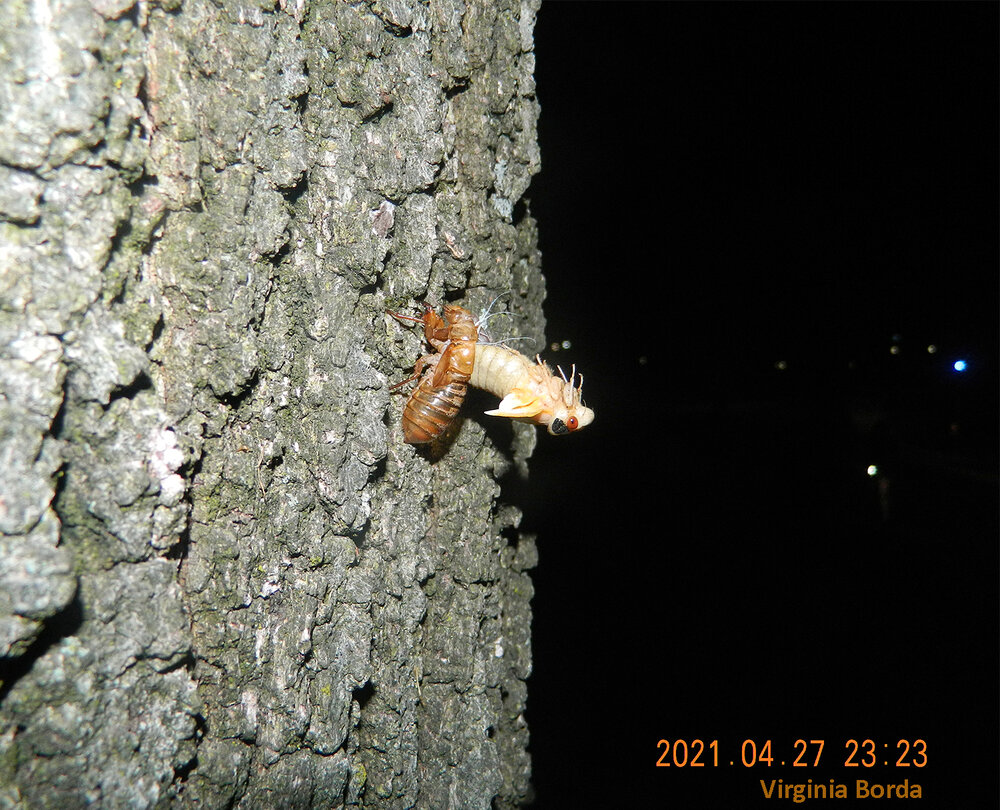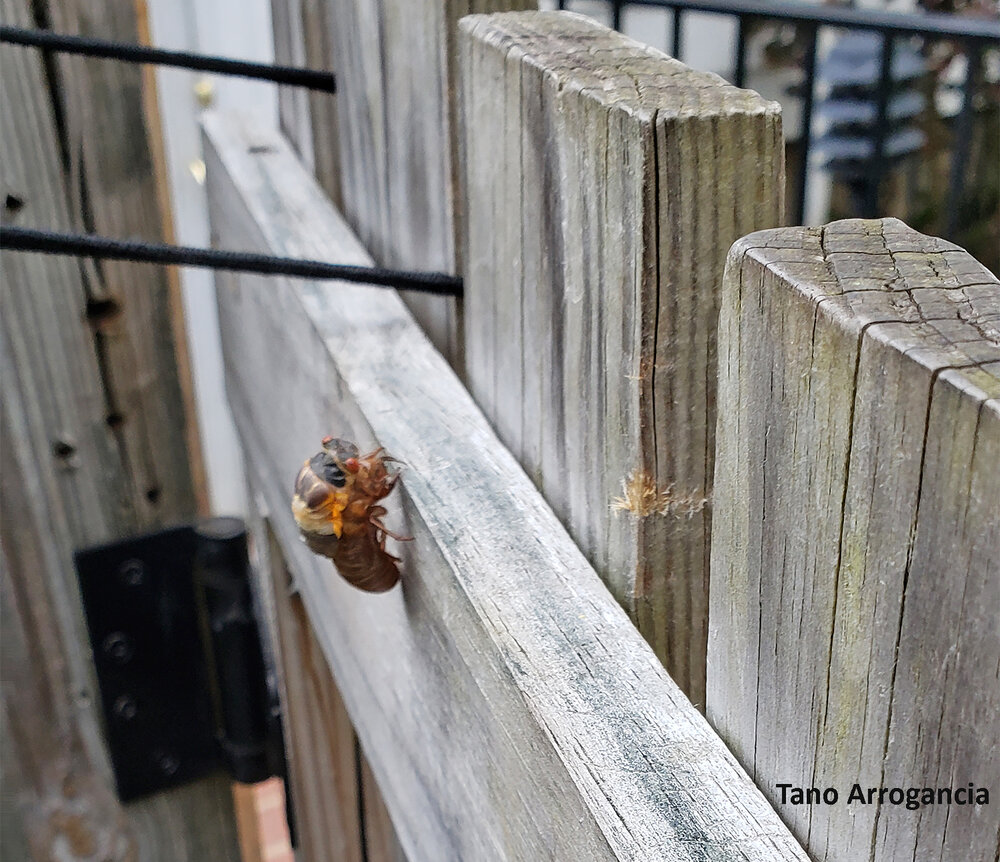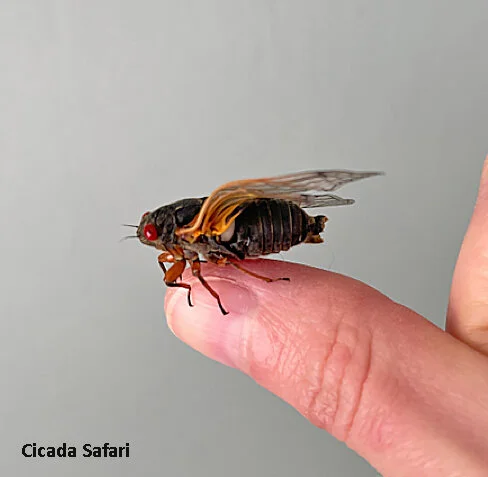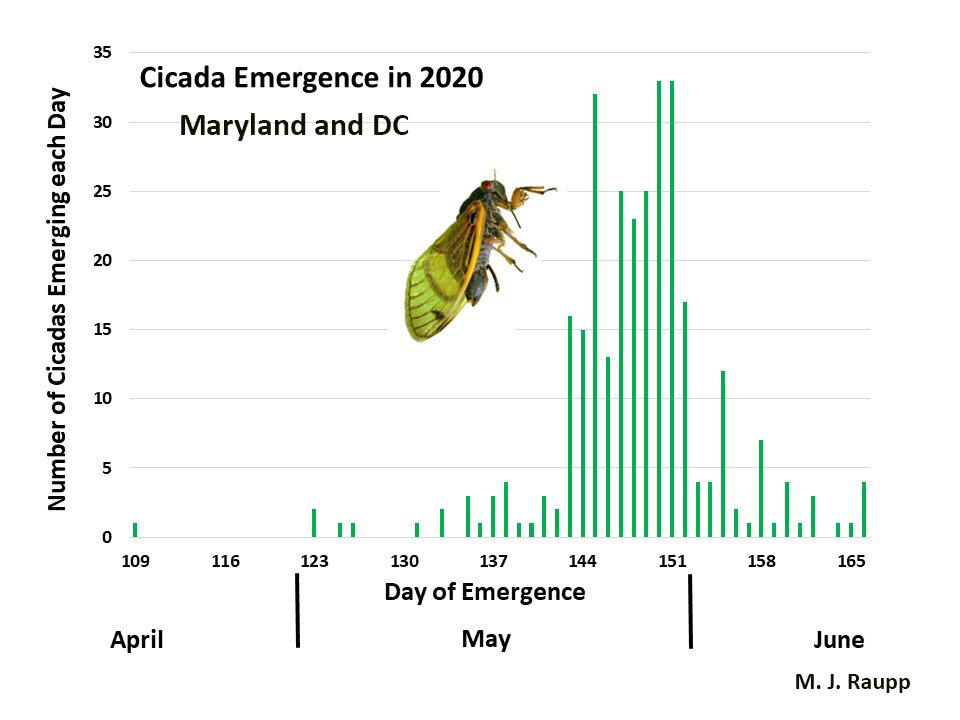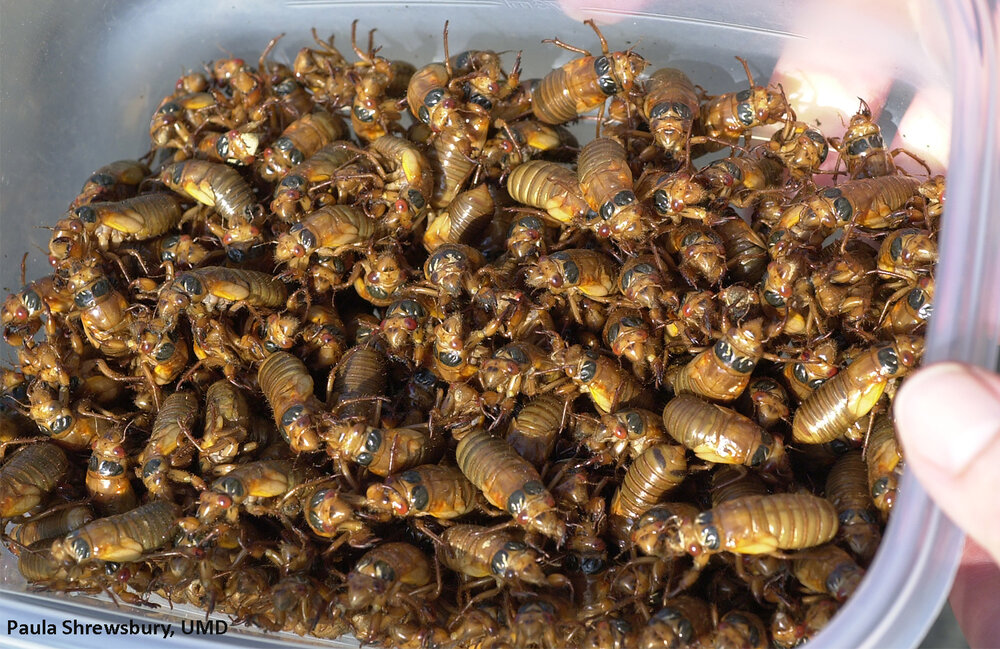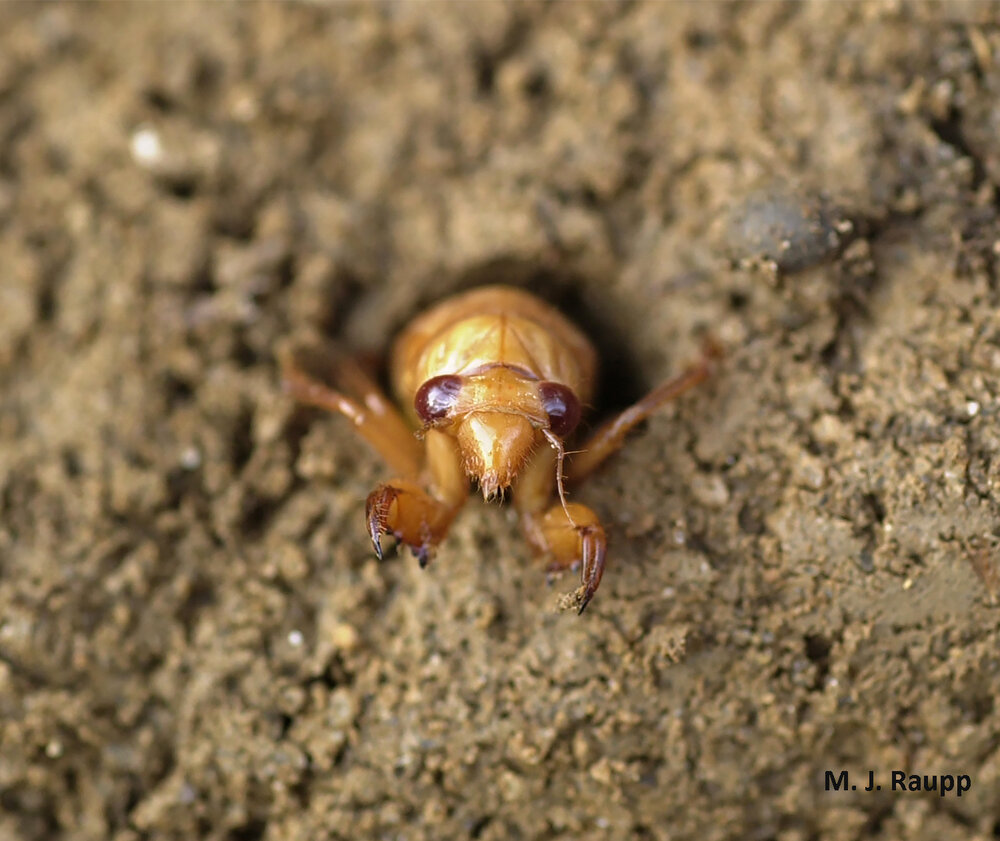Egg-laying and the dark side of cicadas: Cicadas, Magicicada spp.
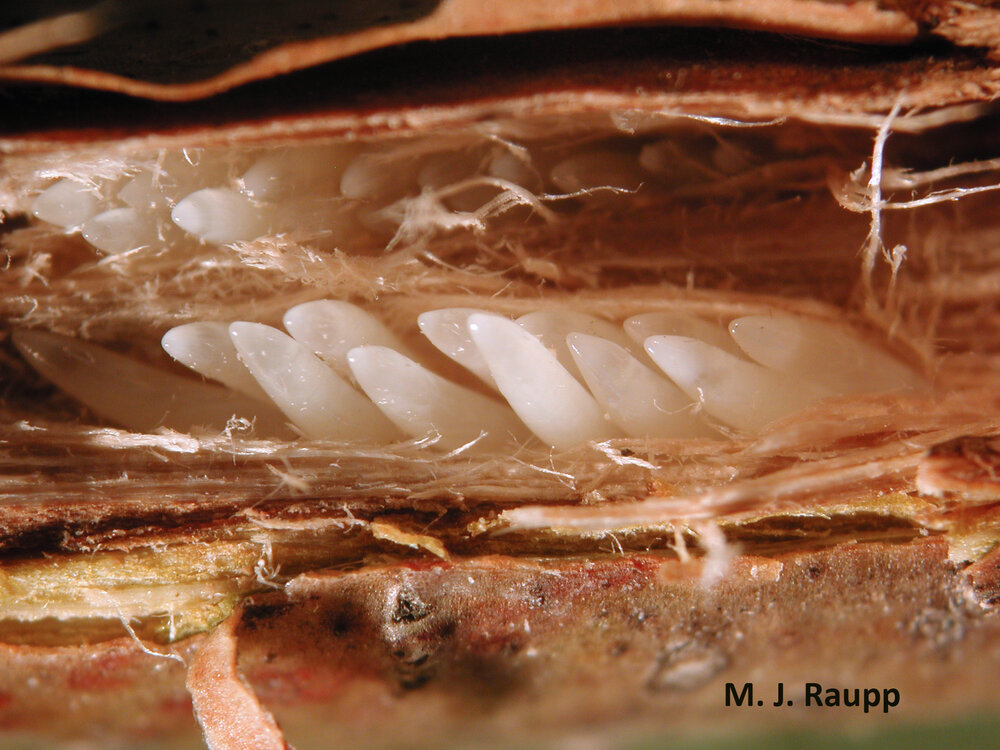
Newly laid cicada eggs deposited in egg nests will hatch in July and August, enter the earth, and reappear as Brood X in 2038.

The egg-laying appendage of the cicada, called an ovipositor, slits tender branches to create egg nests that serve as the nursery for developing eggs.
With thousands of cicadas chorusing in the treetops this week, male cicadas wooed potential mates and females chose the fathers of their offspring. Within hours of mating, females move to the tips of branches and select soft greenwood terminals about the diameter of a pencil to be the nursery for their offspring. Using a sharp egg-laying appendage called an ovipositor, the female cicada slices narrow slits parallel to the long axis of the branch. She then inserts her hollow ovipositor into the branch and with powerful abdominal contractions, she pumps between 20 and 30 tiny eggs into each slit, creating what is technically known in cicada-speak as an egg nest. Each female has the potential to lay between 200 and 400 eggs during the course of her two to four-week lifespan. In the warmth of summer days and nights, cicada eggs develop and, after six to ten weeks, nymphs hatch and tumble to the earth below.
And now for the dark side of periodical cicadas – plant injury. Injury caused by adults as they sip xylem fluid is inconsequential. The real insult to woody plants comes from the wounds caused by female cicadas when they slice branches to insert eggs. Where densities are great, egg-laying, a.k.a. oviposition, causes tips of many branches to wither and die. Dying and dead terminals droop, resulting in a type of tree injury called flagging. Some injured terminals break and fall to the ground. Branches that do not break may eventually heal, but the wound-site may form a gnarly irregular swelling on the branch.
With the mating game completed, female cicadas fly to small branches where they deposit eggs in egg nests. Using her sharp egg laying appendage called an ovipositor, the cicada slices the branch and then deposits 20 to 30 eggs into each slit to form egg nests.

Older, established trees will shrug-off injury caused by egg-laying cicadas with no long term negative effects.
Which plants are most likely to be affected? The bad news here is that periodical cicadas are broad generalists. Miller and Crowley (1998) studied 140 genera of trees at the Morton Arboretum and found more than half sustained injury caused by ovipositing females. Among the most severely affected were ones common to landscapes in the DMV, including Acer (maple), Amelanchier (shadbush), Carpinus (hornbeam), Castanea (chestnut), Cercidphyllum (katsura), Cercis (redbud), Chionanthus (fringe tree), Fagus (beech), Quercus (oak), Myrica (bayberry), Ostrya (hophornbeam), Prunus (cherry) and Weigela (weigela). Another study by Brown and Zuefle (2009) of 42 woody plant species added several new genera to the list and found all but 10 species were used by cicadas to lay eggs. This study found that native and non-native woody plants were equally likely to be used for oviposition by cicadas but alien plants, those with no other known congener (plants of the same genus) in the US, were less likely to be hosts for eggs.
Dense populations of cicadas spell trouble for young trees. Scores of egg nests damage tender branches causing them to wilt, die, and eventually drop from the tree. Withered branches should be carefully pruned from the tree to promote wound closure and encourage restorative growth from axillary buds.
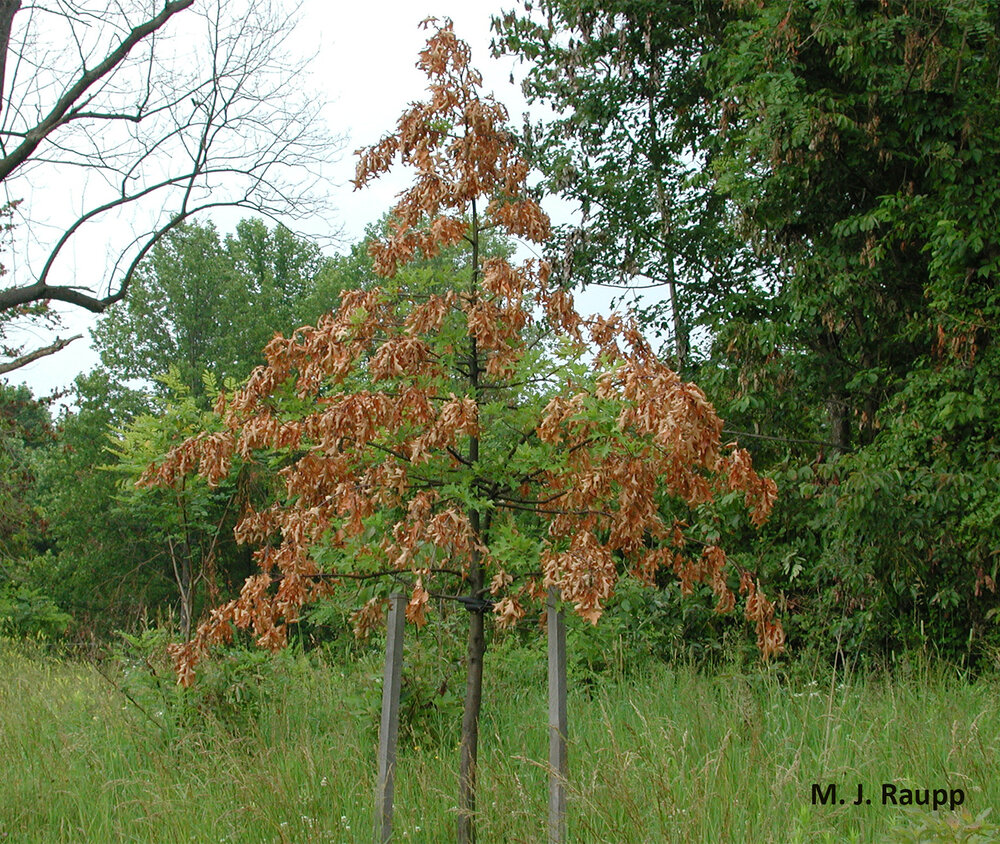
Young, recently planted trees may sustain heavy damage where cicadas are abundant.
Factors beyond taxonomic identity of a plant affect decisions made by female cicadas regarding where to place their eggs. Small, compact plants often have fewer egg-nests compared to those with longer more open branching habits. Trees at the edges of forests with rapidly growing branches exposed to sunlight often sustain more cicada injury. These trends are easily seen in tree nursery stock and recently transplanted saplings found in yards, commercial landscapes, parks, and transportation corridors, especially those near established trees that historically support cicadas. While ovipositional injury poses a threat to newly planted trees, for older and well-established trees flagging and limb breakage may occur in the short term, however, studies indicate that the long-term threat to tree vitality is minimal (Miller and Croft 1998). Early successional trees exhibited no clear reduction in radial growth or overall growth rates of trees attacked by cicadas (Clay et al. 2009). For small trees and shrubs injured by cicadas, wait until the cicada season ends and remove the injured branches by carefully pruning them back to the nearest node before the cicada injury.
Acknowledgements
Much of the background information for this episode was taken from “Return of periodical cicadas in 2021: Biology, Plant Injury and Management” by Michael Raupp. Other great references include “Does the periodical cicada, Magicicada septendecim, prefer to oviposit on native or exotic plant species?” by W. P. Brown and M. E. Zueffle, “Effects of oviposition by periodical cicadas on tree growth” by K. Clay, A. L. Shelton and C. Winkle, “Periodical Cicada (Magicicada cassini) Oviposition Damage: Visually Impressive yet Dynamically Irrelevant” by W. M. Cook and R. D. Holt, “Effects of periodical cicada ovipositional injury on woody plants” by F. Miller and W. Crowley, and “The ecology, behavior and evolution of periodical cicadas” by K. S. Williams and C. Simon. We thank Randy and all the good folks in the Allview neighborhood for allowing us to visit, photograph, and film cicadas in their landscapes.
This post appeared first on Bug of the Week
